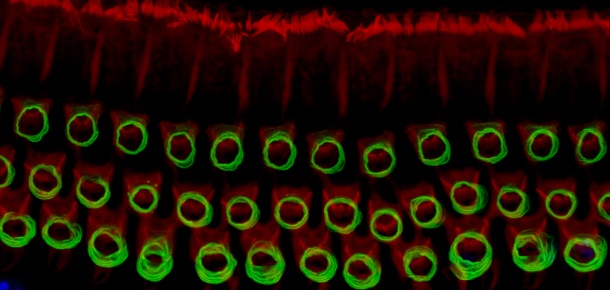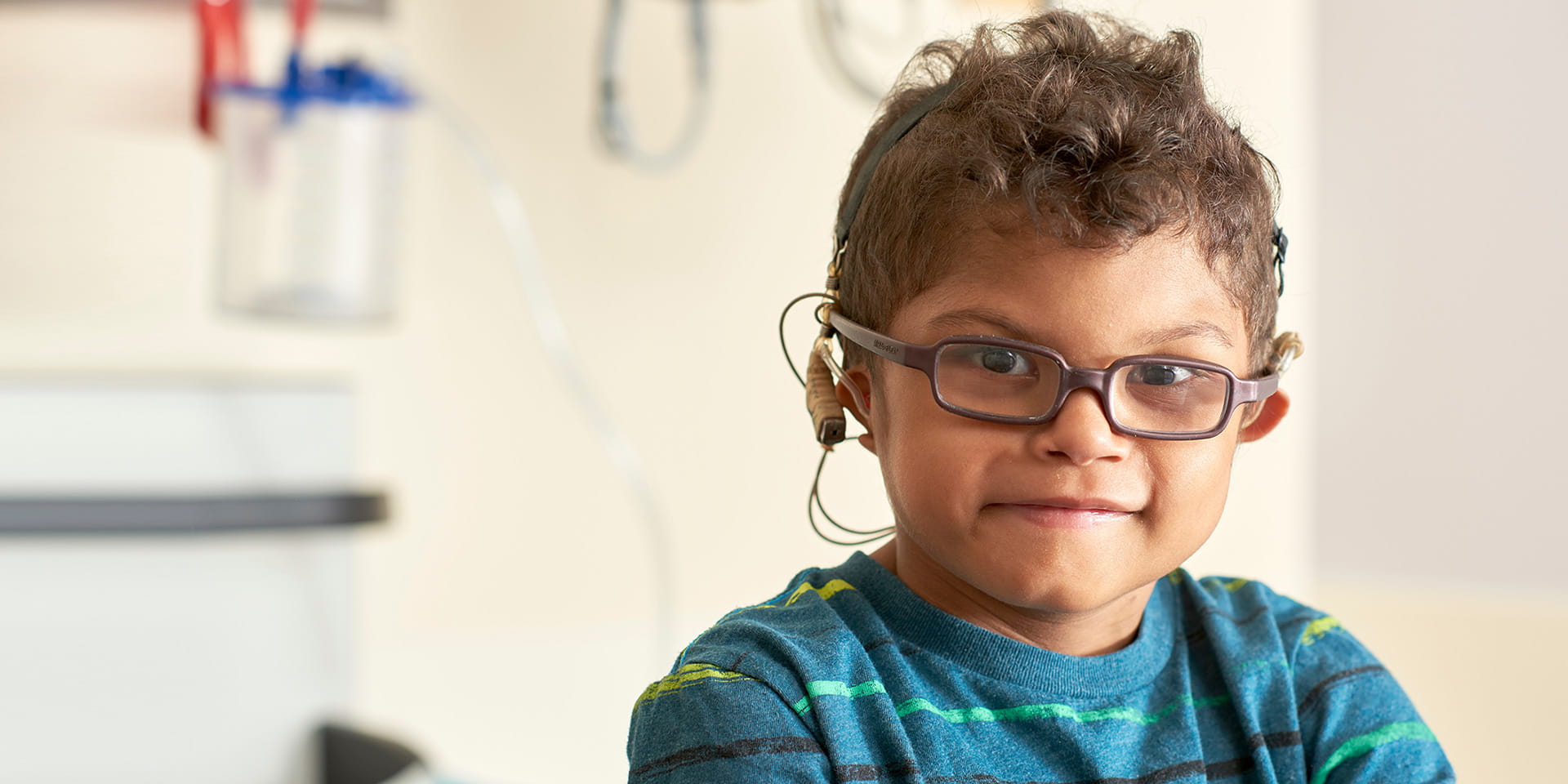Our ability to savor the sounds of our world depends on the remarkable machinery of the inner ear, where highly sensitive hair cells convert sound waves into electric pulses that the brain translates into music, spoken language, the sounds of nature and just plain noise.
Zubair Ahmed, PhD, and Saima Riazuddin, PhD, two researchers in the Division of Ophthalmology and Division of Otolaryngology at Cincinnati Children’s, have devoted their career to understanding why that machinery fails to function for some people, right down to the genetic and molecular levels.
This image, which resembles another type of communications device, comes from Ahmed’s “fusion gene LRTOMT project,” which examines an evolutionary process that led to two separate genes related to hearing in mice being fused into a single hearing-related gene in primates and humans. Ahmed has found that mutations of the LRTOMT gene can cause profound hearing loss. His continuing research seeks deeper understanding of this gene’s functions in hopes of finding ways to prevent or reverse certain types of hereditary hearing loss.
This confocal microscope image was created by staining a cross section of a mouse’s inner ear with fluorescent antibodies that glow in different colors when exposed to the microscope’s light. The green “typewriter buttons” are outer hair cell bodies. The cells’ actin-based architecture is labeled in red.
To learn more about genetic testing for hearing loss, cochlear implants and other treatments available at Cincinnati Children’s, visit our Ear and Hearing Center webpage.
To see more amazing images from our Universe Within collection, click here.






Hi
It’s great to work for the benefits of mankind.
Mr. Ahmed is a well renowned researcher in the field of deafness and hearing loss.It’s nice to be a friend of Zubair Ahmed